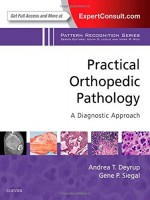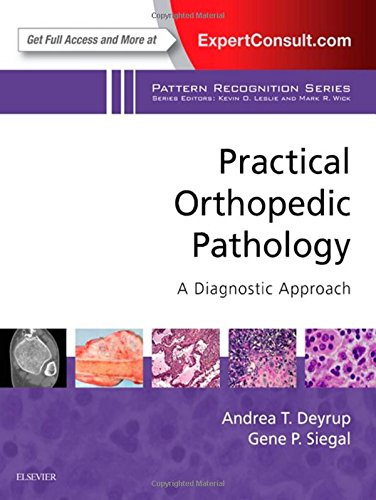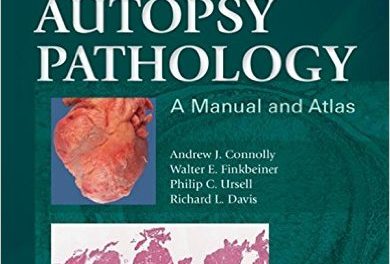 Series Editors: Kevin O. Leslie, MD; and Mark R. Wick, MD
Series Editors: Kevin O. Leslie, MD; and Mark R. Wick, MD
Editors: Andrea T. Deyrup, MD, PhD; and Gene P. Siegal, MD, PhD
Publisher: Elsevier – 344 pages
Book Review by: Nano Khilnani
This book uses the pattern-based approach to diagnosis of orthopedic disease. Sixteen distinct patterns are summarized and briefly described on page xvii, and details of each pattern are in turn presented on pages xxi through xlix.
Twenty-five specialists (including the editors) from all over the United States and one from South Korea authored the contents in the 21 chapters of this book. They are orthopedists, pathologists, radiologists, and practitioners in other related fields. The materials in this book are organized around five sections named below:
- The Basics
- Normal Bone Anatomy
- Patterns in Radiology
- Clinical Patterns of Orthopedic Disease
- Patterns of Diagnostic Evaluation
- Lesions Characterized Primarily By Osteoid Matrix Production
- Lesions Characterized by Osteoid Deposition and Nonaggressive Radiology
- Lesions Characterized by Osteoid Deposition and Aggressive Radiology within Bone
- Lesions Characterized by Osteoid Deposition and Nonaggressive Radiology Located on the Bone Surface
- Juxtacortical Lesions
- Lesions Characterized Primarily By Cartilage Matrix Production
- Lesions Characterized By Cartilage Deposition and Nonaggressive / Intermediate Radiology
- Lesions Characterized By Cartilage Deposition and Aggressive Radiology
- Other Lesions
- Lesions Characterized By Large Numbers of Giant Cells Replacing Trabecular Bone
- Lesions Characterized By a Fibrous Spindle Cell Proliferation Replacing Trabecular Bone
- Vascular Tumors of Bone
- Lesions Characterized By Permeation of Cells through Trabecular Bone with or without Bone Destruction
- Cystic Lesions in Bone
- “Soft Tissue” Tumors of Bone, Avascular Necrosis and Bone Infarct, and Paget Disease
- Metastases to Bone
- Notochordal and Related Lesions
- Lesions of Joint / Synovium
- Degenerative Joint Disease
- Crystal Arthropathies
- Joint-Associated Lesions
You can go to the eBook version of this text to browse and find content, view enhanced images, share notes and highlights, by doing the following:
Visit www.expertconsult.linking.com/redeem
1. Scratch off the gray sticker on the inside front cover of your book to reveal the access code
2. Type the code into the Enter Code box
3. Click Redeem
4. Log in or Sign Up
5. Go to My Library
For technical help call 1-800-401-9962 in the United States or 1-314-447-8200 outside the U.S or email: expertconsult.help@elsevier.com
You can get even more valuable information from an allied website – www.ClinicalKey.com. This search engine of Elsevier Saunders is specially designed for doctors by providing them:
1. Comprehensive Content – the most current, evidence-based answers available for every medical and surgical specialty.
2. Trusted Answers – content supplied by Elsevier, the world’s leading provider of health and science information.
3. Unrivaled Speed to Answer – faster, more relevant clinical answers, so you can spend less time searching and more time caring for your patients.
The organization of materials in the chapters is good, although some paragraphs are rather lengthy and could use shortening to make reading and absorption better.
The most important topics of discussion are presented in bold letters within a small light blue box at the beginning of each chapter. Sometimes, subtopics are also presented.
Definitions of terms are presented in some of the chapters. Images generally follow text. They are of various types: charts, drawings, micrographs, photos, radiographs, tables, x-rays, etc.
These are some of the aspects of diseases discussed in the chapters. Let us take a look from the beginning at what we find for example in chapter 9, Lesions Characterized by Cartilage Deposition and Nonaggressive / Intermediate Radiology:
Topics presented in the blue box at the beginning of the chapter: Chondroblastoma, Chondromyxoid Fibroma, Echondroma, Other Disease, Soft Tissue Chondroma, and Surface Periosteal Chonrdoma.
Chondroblastoma is then presented by discussions of these aspects of the disease:
- Brief Historical Overview
- Incidence and Demographics
- Localization and Clinical Manifestations
- Radiologic Features and Gross Pathology
- Histopathology
- Differential Diagnosis
- Treatment and Prognosis
What follows next is Chondromyxoid Fibroma, with detailed discussions of its various aspects, following almost the same format as above.
At the end of each chapter you will find: Conclusion (but not always), Suggested Readings, and References.
This is an authoritative, amply illustrated book on orthopedic pathology, using the pattern recognition approach, which looks at the radiology and histopathology of the condition or disease in question, as well as the various diagnostic considerations.
Andrea T. Deyrup, MD, PhD is Adjunct Associate Professor in the Department of Pathology at Duke University Medical Center in Durham, North Carolina.
Gene P. Siegal, MD, PhD is Executive Vice-Chair, Robert W. Mowry Endowed Professor of Pathology, Professor of Surgery, Professor of Cell, Developmental, and Integrated Biology, and Director, Division of Anatomic Pathology at the University of Alabama at Birmingham, in Birmingham. Alabama.







